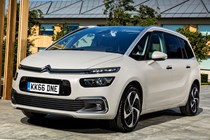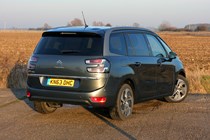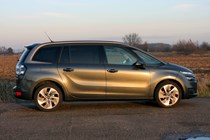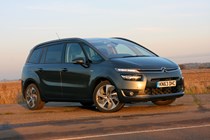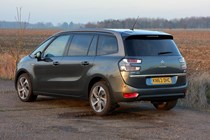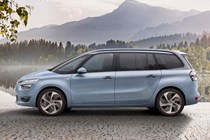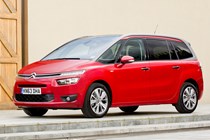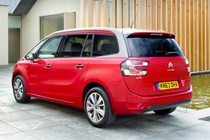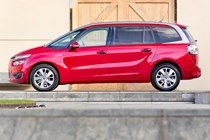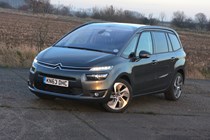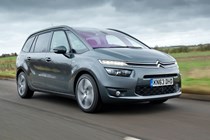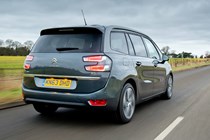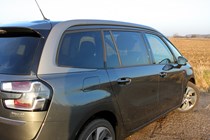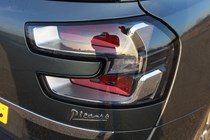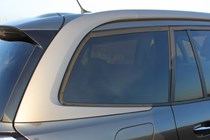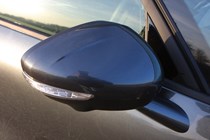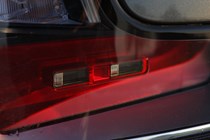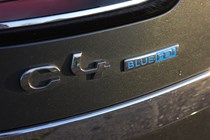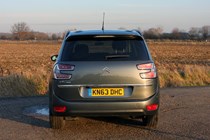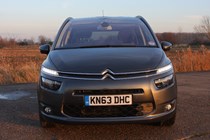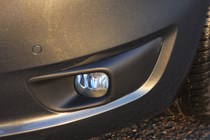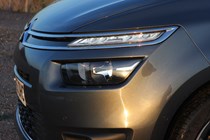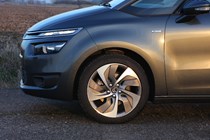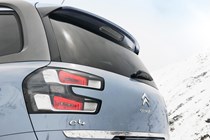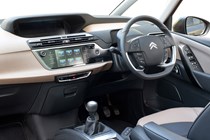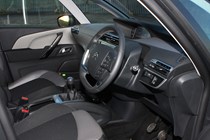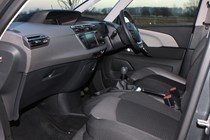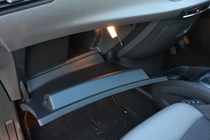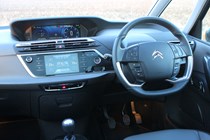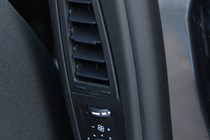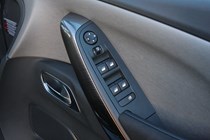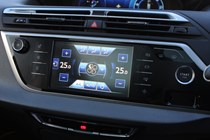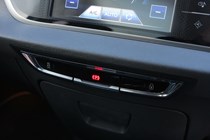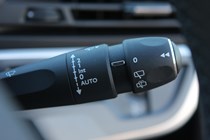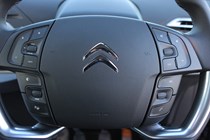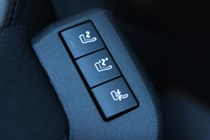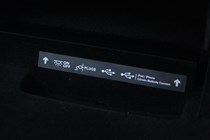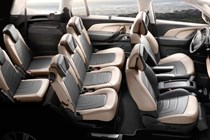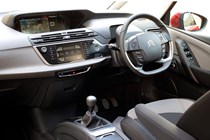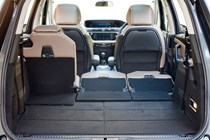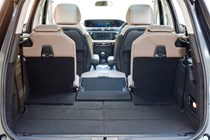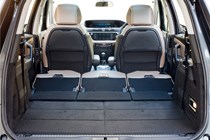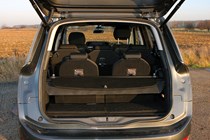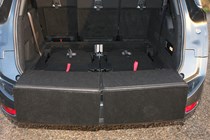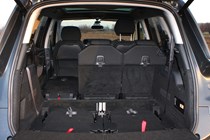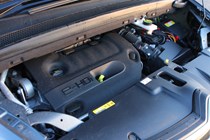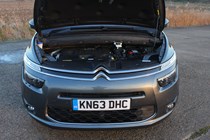
Citroën Grand C4 Picasso Estate (2014-2018) engines, drive and performance

Diesel and petrol engines are offered in the Citroen Grand C4 Picasso range, with the former expected to account for 90 percent of sales.
Diesel derivatives
Three different diesel engines are available for the new seven-seater Picasso, all fitted with stop-start function. Entry-level versions are fitted with the 1.6-litre e-HDi 90 producing 91bhp and 229Nm of torque from 1,750rpm. At 74.3mpg and just 98g/km of CO2, it’s the most frugal and least environmentally impacting of the range.
As standard is on the e-HDi 90 is Citroen’s revised six-speed semi-automatic gearbox, now known as the Efficient Tronic Gearbox, or ETG for short. In response to criticisms of the older, jerky and hesitant version of the gearbox, the new one is smoother and performs much more like a conventional automatic.
Next up is the e-HDi 115, a higher power version of the same engine, producing 113bhp and 270Nm of torque. In addition to the ETG transmission, a six-speed manual is also offered. Choosing the manual might be cheaper, but the ETG is slightly cleaner, producing 1g/km of CO2 less at 104g/km. Both have a claimed 70.6mpg fuel consumption figure.
New to the range is the Euro 6 emissions regulations-compliant 2.0-litre BlueHDi 150 powerplant (meets much stricter emission targets). Available with the manual gearbox and an all-new six-speed fully automatic transmission, this 148bhp engine combines power with impressive economy. Citroen claims a 67.3mpg average for the manual, and 62.3mpg for the automatic. These translate to 110g/km and 117g/km of CO2, respectively.
Petrol power
Manual gearboxes are standard on the two petrol engines – a five-speed on the 1.6-litre VTi with an extra gear fitted to the turbocharged THP motor.
Both engines are smooth in terms of power delivery and refined – perhaps no surprise as they were developed jointly with BMW. They’re worth seriously considering if you’re not covering significant annual mileages to make the diesel’s fuel saving cover the additional purchase cost.
With 118bhp and 160Nm of torque, the 1.6-litre VTi 120 is capable of a claimed 44.8mpg and emits 145g/km of CO2.
For those requiring greater urgency, the THP 155 is essentially the same 1.6-litre unit with the added performance benefits of a turbocharger. It might be tuned for performance in various hot hatchbacks but in the Grand C4 Picasso it’s capable of dealing with the additional heft, making it a brisk performer rather than a sporty people carrier. Its 154bhp and 240Nm of torque at 1,400rpm give it a top speed of 139mph and a 0-62 sprint of 9.0 seconds.
It’s also the more efficient of the petrol choices with a claimed 47.1mpg and 139g/km of CO2 emissions.
If you’re considering a seven-seater people carrier like the Citroen Grand C4 Picasso handling is unlikely to be a high priority. Pleasantly though, the latest model is a significant improvement over the old car in this regard.
Forget words like ‘sporty’ and ‘engaging’, the latest Picasso focuses primarily on comfort with compliant suspension that soaks up most ruts and bumps with ease, particularly at urban speeds. Add to that a steering system that has a greater degree of resistance than before, and you feel like you’re piloting a sure-footed shuttle.
Sensibly, the steering isn’t overly heavy, and with a tight turning circle the Grand C4 Picasso’s light and easy to manoeuvre in city centre car parks.
There’s body roll present when changing directions more quickly around sweeping bends but it’s not excessive. Overall the controls encourage you to drive more gently – much to the pleasure of your six passengers.
Like the five-seater version, the new Grand C4 Picasso features a revised traction control system to benefit grip on slipperier surfaces. Combined with the 110kg average weight saving across the range compared to the car it replaces, customers new and old to the marque are unlikely to feel short-changed by the improvements.


